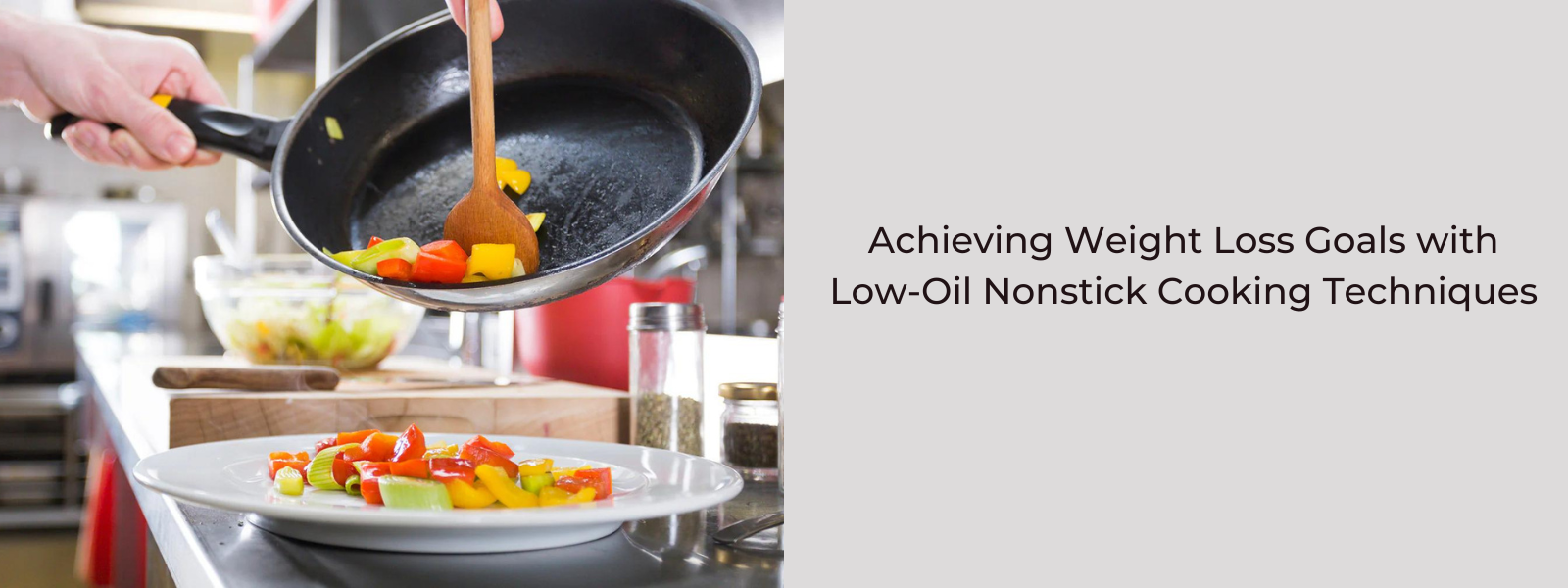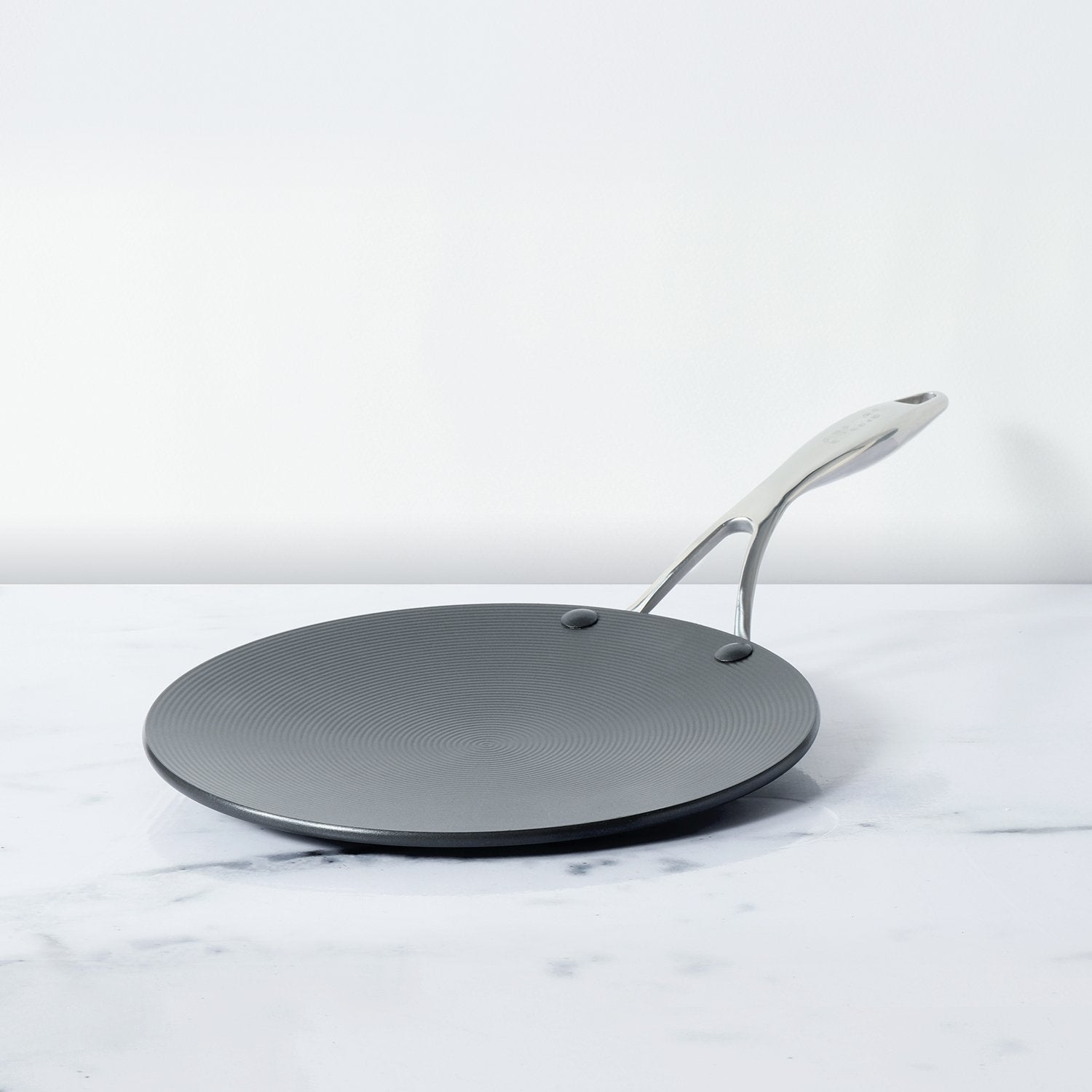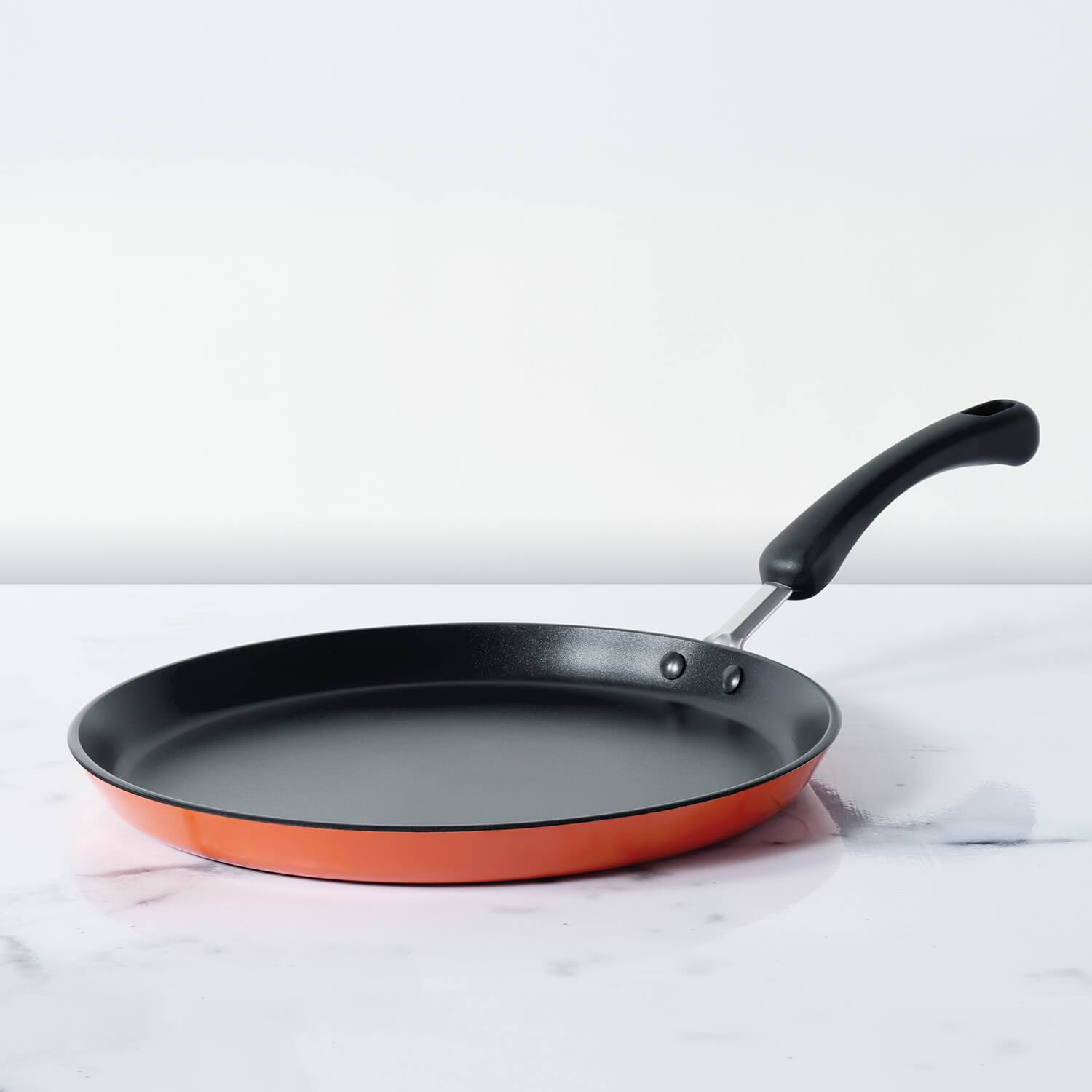Transitioning to a low-oil diet with nonstick cookware can be a beneficial step towards improving overall health and wellness. Nonstick cookware offers several advantages that facilitate the reduction of oil in cooking while still maintaining the flavor and texture of dishes.
One of the key benefits of using nonstick cookware for a low-oil diet is its ability to cook food with minimal oil or even without oil altogether. The slick surface of nonstick pans prevents food from sticking, allowing you to sauté, fry, or grill ingredients with little to no added oil. This means you can enjoy your favorite dishes with significantly lower fat content, reducing calorie intake and promoting weight management.
Furthermore, nonstick cookware enables even heat distribution, ensuring that food cooks evenly without the need for excess oil to prevent sticking or burning. This promotes healthier cooking methods such as steaming, baking, or stir-frying, which require minimal oil for excellent results. By utilizing nonstick cookware, you can explore a variety of cooking techniques that enhance flavor and texture while reducing reliance on oil.
Table of Contents
What Is a Low Oil Diet?
A low-oil diet is a dietary approach that involves reducing the amount of added oils and fats consumed in food preparation and cooking. The goal of a low-oil diet is to minimize calorie intake from fats while still enjoying flavorful and nutritious meals. This eating pattern focuses on using cooking techniques that require minimal oil, such as steaming, boiling, baking, grilling, and sautéing with nonstick cookware. Additionally, when oil is used, healthier options like olive oil, avocado oil, or coconut oil may be preferred due to their beneficial fatty acid profiles. Overall, a low-oil diet emphasizes whole, nutrient-dense foods like fruits, vegetables, whole grains, lean proteins, and legumes, while limiting processed and fried foods that are typically high in added fats. This dietary approach can be beneficial for weight management, heart health, and overall well-being.
Benefits Of Low Oil Diet:
A low oil diet offers several benefits for overall health and well-being:
- Weight Management: By reducing the amount of added oils and fats in your diet, you can lower your overall calorie intake, which may help with weight loss or weight maintenance goals.
- Heart Health: Consuming less oil can lead to lower levels of saturated and trans fats in your diet, which are known to increase the risk of heart disease. Choosing healthier fats like mono- and polyunsaturated fats can help improve cholesterol levels and reduce the risk of cardiovascular disease.
- Improved Blood Sugar Control: Lowering your intake of added oils and fats can help stabilize blood sugar levels, which is beneficial for individuals with diabetes or those at risk of developing the condition.
- Reduced Risk of Chronic Diseases: A low oil diet, rich in fruits, vegetables, whole grains, and lean proteins, provides essential nutrients and antioxidants that can help reduce inflammation and lower the risk of chronic diseases such as type 2 diabetes, certain cancers, and obesity.
- Digestive Health: Consuming fewer oily and fried foods may alleviate symptoms of digestive discomfort, such as bloating, indigestion, and heartburn, as these foods can be harder to digest and may irritate the digestive tract.
- Improved Skin Health: Limiting the intake of oily and greasy foods may help reduce the occurrence of acne and improve overall skin health, as excess oil consumption has been linked to skin issues.
- Enhanced Nutrient Absorption: Focusing on whole, minimally processed foods in a low oil diet can improve the absorption of essential nutrients such as vitamins A, D, E, and K, as well as fat-soluble antioxidants, which are important for overall health.
Is It Non Stick Cookware For Low Oil Diet?
Yes, nonstick cookware can be an excellent choice for a low oil diet. Nonstick cookware is designed with a special coating that prevents food from sticking to the surface, allowing you to cook with minimal or no oil at all. This feature makes it easier to prepare healthy meals with less added fats and calories. By using nonstick cookware, you can enjoy the benefits of low oil cooking techniques such as sautéing, frying, and baking without the need for excessive amounts of oil. Additionally, nonstick cookware is typically easier to clean, reducing the need for oil-based cooking sprays or greasing the pan, further promoting a low oil diet. However, it's essential to choose high-quality nonstick cookware that is free from harmful chemicals like PFOA and PFAS to ensure safe and healthy cooking practices.
What Does A Low Oil Diet Include?
A low oil diet typically includes a variety of whole, minimally processed foods that are naturally low in added fats and oils. Here are some common foods and ingredients often included in a low oil diet:
- Fruits and Vegetables: Fresh or frozen fruits and vegetables are key components of a low oil diet. These nutrient-dense foods provide essential vitamins, minerals, fiber, and antioxidants without added fats.
- Whole Grains: Whole grains such as brown rice, quinoa, oats, barley, and whole wheat products like bread and pasta are excellent sources of complex carbohydrates and fiber. They can be cooked with water or broth instead of oil.
- Lean Proteins: Lean sources of protein like poultry, fish, tofu, tempeh, legumes (beans, lentils, chickpeas), and eggs are important for muscle maintenance and repair. These proteins can be prepared using low-fat cooking methods such as grilling, baking, or steaming.
- Healthy Fats: While the focus of a low oil diet is to minimize added fats, it's essential to include sources of healthy fats like avocados, nuts, seeds, and fatty fish (salmon, trout, sardines) in moderation. These fats provide essential omega-3 and omega-6 fatty acids and can be used sparingly for flavor and satiety.
- Herbs and Spices: Flavorful herbs, spices, and seasonings can add depth and complexity to dishes without the need for added oils. Fresh or dried herbs like basil, cilantro, parsley, and spices like garlic, ginger, cumin, and paprika can enhance the taste of meals.
- Low-Fat Dairy or Plant-Based Alternatives: Choose low-fat or fat-free dairy products like skim milk, yogurt, and cheese or opt for plant-based alternatives like almond milk, soy milk, or tofu-based products to reduce overall fat intake.
- Water and Hydration: Staying hydrated with water throughout the day is essential for overall health and can help support weight management goals. Limiting sugary beverages and high-calorie drinks is also important for a low oil diet.
Is It Easier To Cook Low Oil Diet Food In Non Stick Cookware?
Yes, cooking low oil diet food in nonstick cookware can be easier and more convenient for several reasons:
- Prevents Sticking: Nonstick cookware is designed with a special coating that prevents food from sticking to the surface, even with minimal or no oil. This feature makes it easier to cook delicate foods like eggs, fish, and pancakes without worrying about them sticking to the pan.
- Requires Less Oil: Nonstick cookware allows you to use less oil or fat when cooking compared to traditional cookware. Since the food is less likely to stick to the pan, you can use minimal amounts of oil for flavor or to prevent sticking, resulting in lower overall fat and calorie intake.
- Easy Cleanup: Nonstick cookware is typically easier to clean than traditional cookware, as food residue slides off the surface more easily. This can save time and effort during cleanup, especially when cooking dishes that tend to leave behind sticky or greasy residues.
- Versatility: Nonstick cookware can be used for a wide range of cooking techniques, including sautéing, frying, stir-frying, and even baking. This versatility allows you to prepare a variety of low oil diet foods using different cooking methods without the need for excessive oil or fat.
- Healthier Cooking: By using nonstick cookware to cook low oil diet foods, you can promote healthier cooking practices and reduce your overall intake of added fats and oils. This can support weight management goals, heart health, and overall well-being.
Transitioning to a Low-Oil Diet with Nonstick Cookware
Transitioning to a low-oil diet with nonstick cookware is an excellent way to reduce calorie intake and promote healthier eating habits. Nonstick cookware features a special coating that prevents food from sticking to the surface, allowing you to cook with minimal or no oil at all. To make this transition smoother, here are some helpful tips:
- Invest in High-Quality Nonstick Cookware: Choose nonstick cookware made from durable materials like aluminum or hard-anodized aluminum with a reliable nonstick coating. Ensure that the cookware is free from harmful chemicals like PFOA and PFAS for safer cooking.
- Use Cooking Sprays Sparingly: While nonstick cookware eliminates the need for excessive oil, you may still use cooking sprays sparingly to enhance flavor or prevent ingredients from sticking. Opt for healthier alternatives like olive oil or avocado oil sprays.
- Explore Dry Cooking Techniques: Experiment with dry cooking methods such as roasting, grilling, baking, and sautéing in nonstick pans without adding any oil. You'll be surprised at how flavorful and satisfying your dishes can be with minimal added fats.
- Opt for Healthier Cooking Oils: When you do use oil, choose healthier options like olive oil, coconut oil, or avocado oil, which are rich in beneficial fats and offer various health benefits. Use these oils in moderation to add flavor and moisture to your dishes.
- Cook with Nonstick Bakeware: Extend your low-oil cooking habits to baking by using nonstick bakeware like baking sheets, muffin pans, and cake pans. You can enjoy your favorite baked goods with less added fats and calories.











Leave a comment